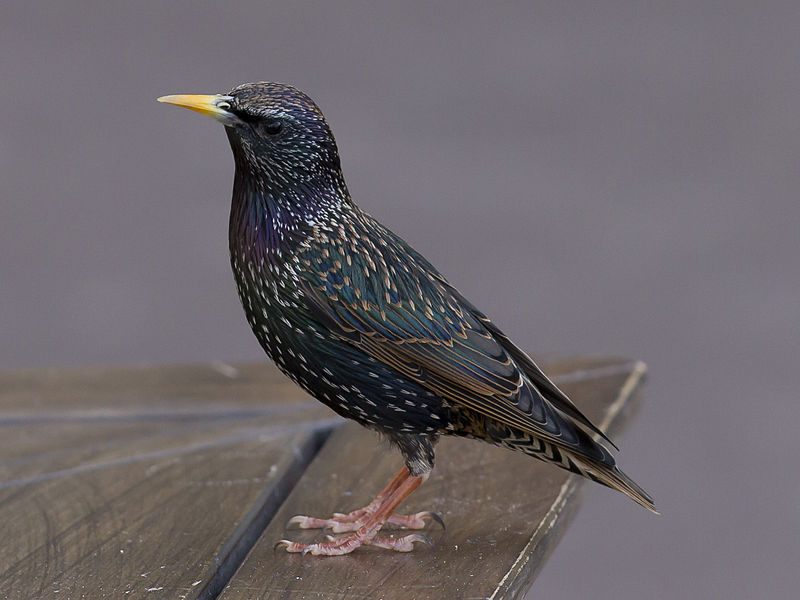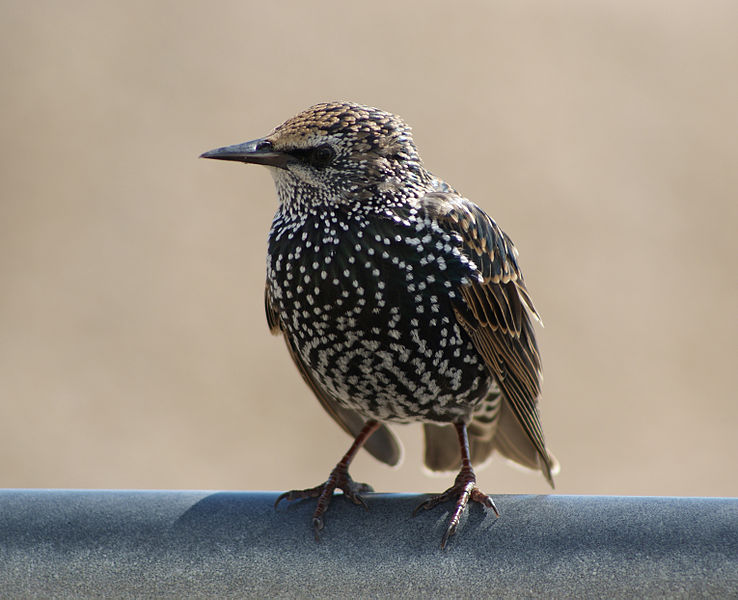|
|
european starlingSturnus vulgaris
Identification:
This nonnative bird is stocky and mostly black, with a short tail and triangular wings whose shape is especially clear when the bird flies. Its winter appearance is black speckled with white, and out of breeding season the bill is dark. In breeding season it’s transformed to lose the spots and become black with iridescent touches and a striking long yellow bill. Behavior: The European Starling is very common in open fields and lawns. It struts along the ground in search of food. It is very flexible when it comes to food choices, though it mostly consumes insects. It travels in noisy, croaking and rattling crowds. Since it is a cavity nester, some scientists have worried that it may out-compete native cavity nesters, but research so far suggests that for the most part this hasn’t happened. What brings it to the SBG? Food, cover, perhaps nesting sites. The undiscriminating starling will eat many foods, even garbage, so it thrives just about anywhere. When can I see it? Year-round. |


